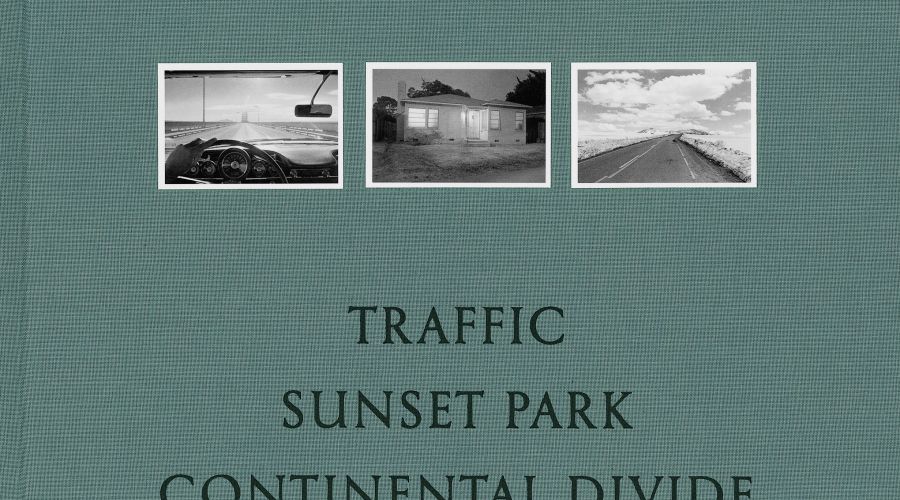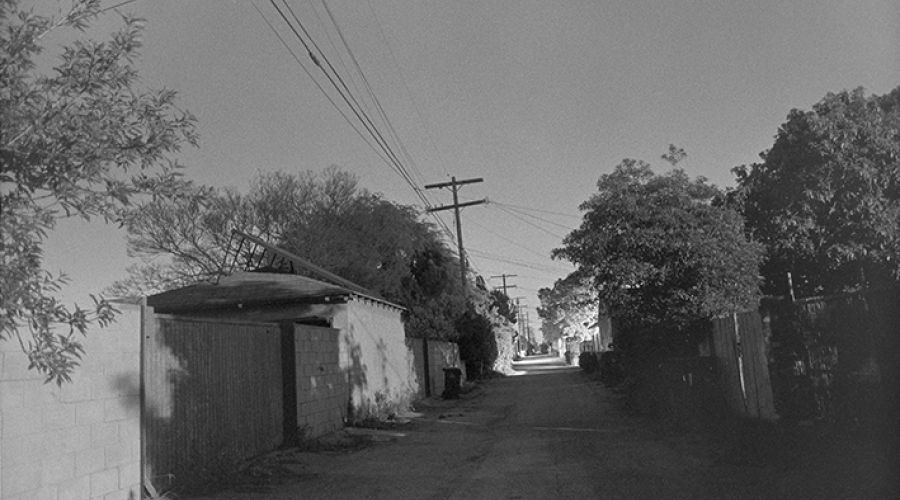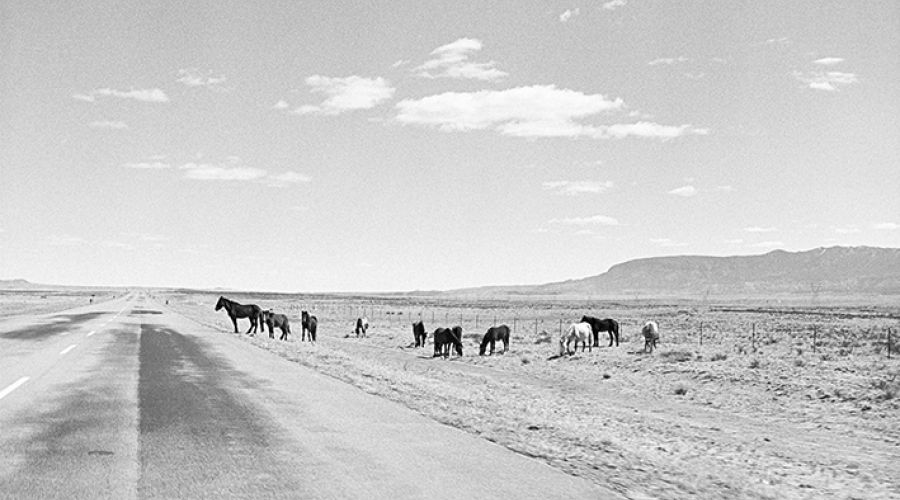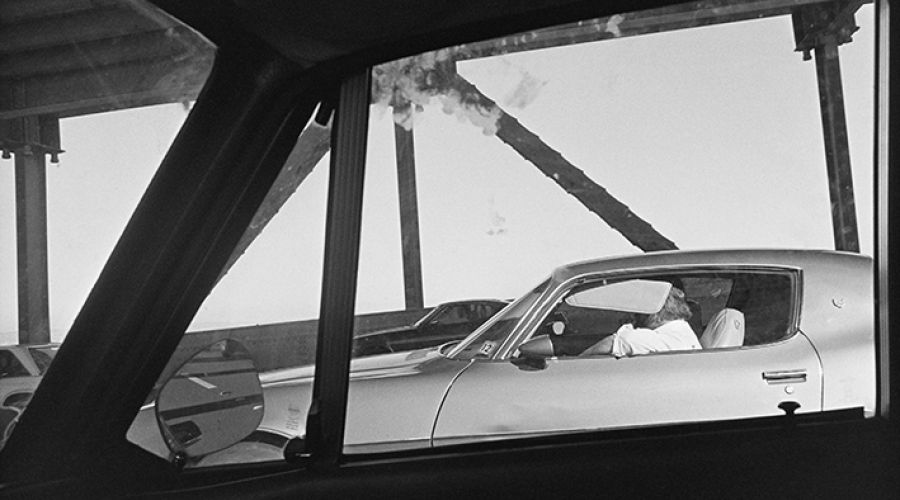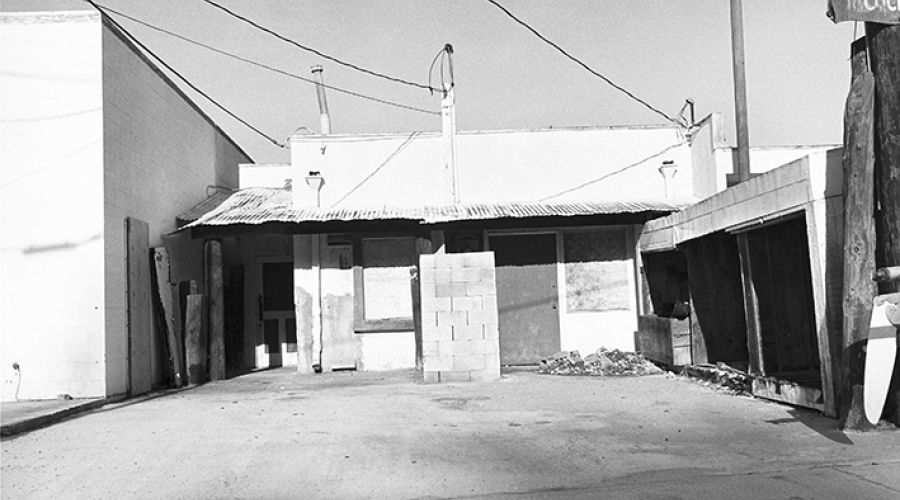Henry Wessel
Not Your Photographer’s Photographer:
A Review of Henry Wessel’s Traffic/ Sunset Park/ Continental Divide
Opening the front cover, I find myself driving through traffic on the way to work. The sun is blinding my eyes as I roll to stop at a light. A car pulls up next to me.
Grabbing a handful of pages, I flip forward to find I’ve just finished dinner. The dog wants go out for a walk and so, in a half-tired daze, I pull on my jacket to walk among the small glowing bungalows; the dog occasionally stopping to sniff under fences or bark up a tree.
Now I’m driving across the American West, but I don’t stop to gaze up in wonder at the redwoods, or the mountains, or the canyons – instead I’ve been lulled into a stupor by the radio and the winding road. I’m mesmerized by the sparse trees poking out of the landscape, and a huddle of hitchhikers who disappear into the landscape as I pass them.
Such is the wandering mood of Traffic/ Sunset Park/ Continental Divide, a re-print of photographer Henry Wessel’s work set to be released by Steidl this month. In 228 pages and 105 black and white images, we people-watch out the car window of Wessel’s daily commute in Traffic. We wander up and down residential streets, breathing in the suburban noir in Sunset Park while noticing the twisted branches of trees, and the trickling light of living rooms. Then, with renewed wonder, we get back into Wessel’s car in Continental Divide to drive across the mountains and down into the desert – this time looking out at vast stretches of road and the patterns of telephone poles.
A member of the New Topographics, Wessel is famous for his photographs of the American West which eschew emotionality in favor of a deadpan, purely topographic style.
Unlike the dramatic tonal contrasts of Ansel Adams’ mountain ranges and sweeping vistas of California redwoods, Wessel surveys his surroundings via the lineage of Walker Evans; documenting shop fronts and picket fences, while paying tribute to the significance of the mundane.
But it would be a disservice to Wessel’s work to argue that it simply flattens and distills the world into architecture and form. A heart beats beneath this critical catalogue. On an opening page, Traffic/ Sunset Park/ Continental Divide borrows a stanza from Wallace Stevens’ “Thirteen Ways of Looking at a Blackbird” to prime the reader for Wessel’s poetics of perspective:
“Why do you imagine golden birds?
Do you not see how the blackbird
Walks around the feet
Of the women about you?”
Rather than reaching for lofty heights, Wessel turns his gaze on the grounded and what is already at his feet. But this book does more than collect blackbirds. Wessel’s arrangement of images provides rhythm, rhyme, and movement to his series. The images hum, repeat themselves, bump shoulders, and call out to each other; revisiting the same ideas again and again like mantras — becoming totally strange, then familiar once more. Wessel reaches out into the world and unifies it around his lens. As Stevens writes,
“A man and a woman
Are one.
A man and a woman and a blackbird
Are one.”
But the egalitarianism of Wessel’s gaze and his meditative tone can also serve as a barrier for his viewers. Sometimes Wessel stops the car. He stares into a landscape for what seems like forever and we stare with him, having no idea whether he’s seen something rustle in a bramble, or if the unremarkable view triggered a memory that we’ve never had. Occasionally, Wessel stays out so long under the porch lights that we shiver beneath the night breeze. Our fingers go cold. In our impatience, sometimes people in traffic are just people in traffic.
For all its poetry, the mundanity of Wessel’s photography occasionally exhausts its project; leaving the viewer to wonder if they’ve perhaps missed some central point – overlooked some key thesis of the New Topographers, or failed to pick up breadcrumbs of extra-textual reference. Wessel’s aversion to the tropes and frills of commercial photography and his renowned reputation in the art world invites him to be labeled as a “photographer’s photographer” – a term as exclusionary as the concept itself. When the democracy of his vision collapses on us in a moment of confusion we’re left to wonder whether we’ve fallen short of expectations. We wonder whether a “photographer’s photographer” believes that knowledge of the language established by Evans’ slanting sidewalks, or Eggleston’s cacophonous road signs is necessary to recognize the significance of these symbols, and to read them in the world.
Ultimately, there’s no secret decoder or cypher to hold up to Wessel’s work. Wessel’s photographic journey doesn’t unfurl into a manifesto, or a universal guidebook on how to twist the world into the fantastic. Wessel doesn’t even suggest that there is magic to be found everywhere. Instead, his photographic journey feels fundamentally personal and wholly unconcerned with whether his photographs will resonate. Henry Wessel simply leaves his house with a camera in hand and invites us to come along.
-Sasha Patkin
****
Like zen koans or visual haikus, Henry Wessel’s photography creates an archive of meditative sensations which perplex as much as they enlighten.
More information: https://steidl.de/Buecher/Traffic-Sunset-Park-Continental-Divide-0224303543.html

